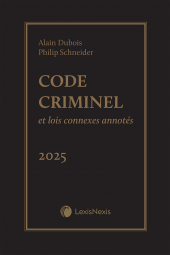Secured Lending in Intellectual Property, 2nd Edition
One Year Subscription Only Terms
Subscribers receive the product(s) listed on the Order Form and any Updates made available during the annual subscription period. Shipping and handling fees are not included in the annual price.
Subscribers are advised of the number of Updates that were made to the particular publication the prior year. The number of Updates may vary due to developments in the law and other publishing issues, but subscribers may use this as a rough estimate of future shipments. Subscribers may call Customer Support at 800-833-9844 for additional information.
Subscribers may cancel this subscription by: calling Customer Support at 800-833-9844; emailing customer.support@lexisnexis.com; or returning the invoice marked 'CANCEL'.
If subscribers cancel within 30 days after the product is ordered or received and return the product at their expense, then they will receive a full credit of the price for the annual subscription.
If subscribers cancel between 31 and 60 days after the invoice date and return the product at their expense, then they will receive a 5/6th credit of the price for the annual subscription. No credit will be given for cancellations more than 60 days after the invoice date. To receive any credit, subscriber must return all product(s) shipped during the year at their expense within the applicable cancellation period listed above.
Détails des produits
Secured financing in intellectual property is a rapidly evolving area of the law as intellectual property becomes the core asset in many industries. Secured Lending in Intellectual Property, 2nd Edition serves as a guide to best practices in this financing segment by examining the commercial and legal context of intellectual property in commercial transactions as well as financing vehicles and procedures, and the associated commercial and legal risks. The scope of this new edition has been significantly expanded and revised to cover all types of intellectual property, including copyright, patents, trademarks, trade secrets and domain names.
Learn more about Secured Lending in Intellectual Property, 2nd Edition at www.koulah.com.
A definitive resource
This second edition of Secured Lending in Intellectual Property examines the growing recognition of intangible assets as significant corporate assets and the rise in intellectual property used as collateral. Using a hypothetical fact pattern to explain the various concepts, this book provides comprehensive explanations of:
- The different ways intellectual property is being leveraged to raise financing through securitization and collateralization
- The due diligence process for intellectual property by:
- Defining the most common forms of IP and providing an overview of the general principles relating to each form with the goal of highlighting the issues that lenders dealing with IP financing transactions should be aware of
- Examining the concepts of copyrights, patents, trademarks, trade secrets and domain names as well as the protection afforded to such property by law, their registration requirements and lifespan, and the specific issues related to IP laws that lenders must understand when conducting their due diligence
- Explaining how a creditor can establish the ownership and status of the debtor's IP rights in the due diligence process
- Explaining how to examine the status of the IP rights, including their validity, the existence of third-party liens or encumbrances and their scope
- Applying the due diligence concepts to a hypothetical situation so readers can understand how these principles work practically in a due diligence review
- The creation of security interests in intellectual property by reviewing the applicable laws and how they apply, as well as the general principles of security interest creation and specific issues that lenders taking IP as collateral need to understand and address, including after-acquired IP, tangible property relating to IP and IP agreements (e.g., license and escrow agreements)
- The types of agreements used for taking intellectual property as collateral ie. assignment agreements versus security agreements, the differences between such agreements and a detailed review of the content and form of a security agreement for intellectual property assets
- The purpose and procedure for the perfection of security interests in IP, as well as a review of the applicable laws, a discussion of what constitutes sufficient perfection and in which registry offices filings are necessary, through a review of recent case law
- How to navigate the challenging process of establishing priority in lending situations secured by IP where the priority rules of secured transactions and IP come into play
- A series of case studies to illustrate the potential outcomes when intellectual property and secured financing laws are called upon to resolve priority disputes
- The laws that apply to enforcement, how creditors can use relevant enforcement measures to help them maximize the value of intellectual property collateral and how a debtor's bankruptcy affects a lender's rights
New In This Edition
The scope of this second edition has been significantly expanded and revised to include the extensive number of decisions that have been released since 2006 as well as a more comprehensive review of the 2009 amendments to the Bankruptcy and Insolvency Act and the Companies' Creditors Arrangement Act that relate to intellectual property. In addition, the book features:
- A new chapter on intellectual property valuation authored by Weston Anson, Chairman and Jeff Anderson, Managing Director at CONSOR, California-based IP Consulting and Valuation firm, listed by Forbes' 2016 list of the Top 25 Intellectual Property and Valuation Service Firms in the top 5 global independent IP valuation firms, and number 11 overall, which introduces the concept of intellectual property strategies and briefly reviews both traditional and alternative valuation methodologies. This chapter also includes case studies to illustrate how valuing intellectual property can be an important step for evaluating a company's monetization strategy and examines trends in valuation standards
- A completely revised chapter framing the legal and commercial context for intellectual property lending that uses anecdotal explanations to demonstrate the importance of intellectual property as collateral
- A new chapter written by UN Senior Legal Counsel, Spyridon Bazinas, which discusses how the UNCITRAL Model Law on Secured Transactions deals with intellectual property
A Useful Guide
This volume is sure to quickly become the go-to resource for anyone involved in secured financing in the intellectual property sphere, including:
- Banking and finance lawyers who advise on creating and perfecting security interests under the relevant legislation for secured financing transactions involving IP
- Intellectual Property lawyers who advise on secured financing transactions using IP as collateral
- In-house counsel who advise on entering into secured financing transactions involving IP
- Corporate lawyers who must identify IP issues in secured financing transactions
- Banks and financial institutions who deal with secured financing transactions involving IP and must be able to understand and compare Canadian and U.S. law when dealing with cross-border transactions
- Accounting firms whose clients make use of IP-based financing
- Academics who teach secured transactions
Table des matières
Chapter I: Intellectual Property in Commercial Transactions: Commercial and Legal Context
Chapter II: Creation of Security Interests in Intellectual Property
Chapter III: Perfection of Security Interests in Intellectual Property
Chapter IV: Priority Disputes and Enforcement Involving Intellectual Property
Chapter V: UNCITRAL Model Law in Secured Transactions: The Intellectual Property Provisions
Conclusion
Appendix A: Canada
Appendix B: United States
Appendix C: International
Produits liés
-
 Le droit linguistique au Québec, 2e éditionDate de sortie: September 09, 2024155,00 $
Le droit linguistique au Québec, 2e éditionDate de sortie: September 09, 2024155,00 $ -
 Code criminel et lois connexes annotés, édition 2025 (Volume 1) + Guide du praticien (Volume 2) + Livre électroniqueDate de sortie: August 13, 2024175,00 $
Code criminel et lois connexes annotés, édition 2025 (Volume 1) + Guide du praticien (Volume 2) + Livre électroniqueDate de sortie: August 13, 2024175,00 $ -
 Méthodologie et épistémologie du droit comparé : Diverses méthodes et écolesDate de sortie: July 10, 2024100,00 $
Méthodologie et épistémologie du droit comparé : Diverses méthodes et écolesDate de sortie: July 10, 2024100,00 $
 Lexis Nexis
Lexis Nexis 